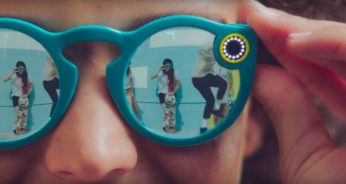
By: Kathleen Hugo,
In today’s world, people frequently conduct financial transactions through mobile payments. A person can pay her roommate for utilities, split the dinner bill, or chip in for a round of drinks all with the click of a button. A popular platform to conduct such transactions is the peer-to-peer payment service mobile app called Venmo, which acts as a “digital wallet.”[1] While Venmo is known for its user-friendly interface, many users overlook the possibility of potential fraud and the limited legal actions they can take in that event.
Background on Venmo:
Venmo was created in 2009 when one of the cofounders, Iqram Magdon-Ismail, forgot his wallet on a trip to Philadelphia to visit friends.[2] When Magdon-Ismail owed Andrew Kortina two hundred dollars, the two agreed that the situation would be easier solved through a mobile payment system rather than traditional cash or checks.[3] In 2012, Magdon-Ismail and Kortina’s startup, “Venmo,” was purchased by Braintree, which operates the payment systems for companies such as Dropbox, Airbnb, StubHub, and Uber.[4] The following year, Ebay’s PayPal acquired Braintree, making Venmo a subsidiary of PayPal.[5]
How Venmo Works:
To use Venmo, a consumer simply links a credit card, debit card, or checking account to the mobile app, and can immediately send or receive payments from friends in their network.[6] The payments are then retained in a “Venmo Balance” account, which can be used for future transactions or cashed out and deposited into the consumer’s bank account.[7]
The Problem:
Many users incorrectly assume that when sending a payment, Venmo immediately transfers the funds from Consumer A to Consumer B.[8] In reality, Venmo floats the money to Consumer B until the funds have cleared from Consumer A’s bank account.[9] This common misunderstanding of Venmo’s technology is being utilized by scammers to commit fraudulent transactions, with little to no protection for the consumer on the other end.[10] One type of Venmo fraud occurs when Consumer A uses a fraudulent credit card to pay Consumer B.[11] The money immediately appears in Consumer B’s Venmo balance, but when he or she attempts to cash out, the transaction has been reversed for failure to clear Consumer A’s bank account.[12] Another common scam occurs when strangers A and B conduct a transaction via Craigslist.[13] Consumer A, the buyer, deliberately cancels the transaction before Consumer B, the seller, has had time to transfer the money into his or her bank account.[14] In this case, the seller may have already sent the goods to the buyer, but the buyer has now evaded payment, and the seller has no opportunity to recover.[15] For this reason, Venmo does not condone stranger-to-stranger transactions on Craigslist and event sites, instead encouraging users to only engage in “payments between friends and people who trust each other.”[16]
Venmo has limited options for users who fall victim to fraudulent transactions, especially when the consumer is in violation of the User Agreement. Venmo’s user agreement clearly prohibits personal accounts from “receiv[ing] business, commercial, or merchant transactions.”[17] So if Consumer A purchased concert tickets from Consumer B on Craigslist, this could be considered a “merchant transaction” on a personal account, therefore breaching the User Agreement.[18] Venmo does offer the option to create a business account, but this requires “an application and explicit authorization.”[19]
Section (i) of the user agreement, entitled “no buyer or purchase protection,” says just that. In the event of any “unsatisfactory” transactions, the customer will have no option for remedy from Venmo.[20] The only available recourse for consumers is described in section (D)(11), which describes the consumer’s options in case of an “unauthorized transaction,” or an “error that occurs when money is sent from your account that you did not authorize and did not benefit you.”[21] Aside from this limited circumstance, Venmo’s terms and conditions are clear on the fact that “Venmo does not offer buyer or seller protection,” so use at your own risk.[22]
Venmo is a free service designed for convenience, but with that benefit comes the potential burdens of conducting transactions. While Venmo is a widely accessible and easy-to-use option for mobile payments, each consumer must understand its limits in order to protect his or her money.
[1] See Venmo, http://www.venmo.com.
[2] See Felix Gillette, Cash is for Losers!, Bloomberg (Nov. 21, 2014, 6:32 AM), http://www.bloomberg.com/news/articles/2014-11-20/mobile-payment-startup-venmo-is-killing-cash; See also Carolyn Lowry, Note: What’s In Your Mobile Wallet? An Analysis of Trends in Mobile Payments and Regulation, 68 Fed. Comm. L.J. 353 (2016).
[3] See Gillette, supra note 2.
[4] Trevir Nath, How Safe is Venmo and Why is it Free?, Investopedia (Mar. 24, 2015, 6:50 PM), http://www.investopedia.com/articles/personal-finance/032415/how-safe-venmo-and-why-it-free.asp; see generally Braintree, https://www.braintreepayments.com (last visited Oct. 3, 2016).
[5] See Gillette, supra note 2. See also Alison Griswold, Venmo Scammers Know Something You Don’t, Slate (Sept. 15, 2015, 9:32 PM), http://www.slate.com/articles/business/moneybox/2015/09/venmo_scam_and_fraud_why_it_s_easy_to_get_ripped_off_through_the_mobile.html.
[6] See Nath, supra note 4.
[7] Id.
[8] See Griswold, supra note 5 (“Contrary to many users’ assumptions, sending money on Venmo does not instantaneously transmit funds from Person A to Person B.”).
[9] See id.
[10] See id.
[11] See Justin Pritchard, Venmo Scams: Can You Get Ripped off on Venmo?, The Balance (July 5, 2016), https://www.thebalance.com/venmo-scams-315823 (“[T]he person might use a stolen, credit card number to fund the payment . . .”).
[12] See Griswold, supra note 5 (“He handed off the devices once he got Venmo’s payment notifications, then later attempted to withdraw funds into his bank account. They never showed up.”).
[13] See id.
[14] See Ethan Wolff-Mann, The Scary Thing You Don’t Understand About Venmo, Time (Sept. 21, 2015), http://time.com/money/4036511/venmo-more-check-than-cash/.
[15] See id.
[16] See Venmo, https://www.venmo.com/about/security (“Avoid payments to people you don’t know, especially if it involves a sale for goods and services (like event tickets and Craigslist items).”).
[17] See User Agreement § B, Venmo, https://venmo.com/legal/us-user-agreement (valid as of Sept. 13, 2016).
[18] Id. at § I.
[19] See Venmo, https://venmo.com/about/security.
[20] See User Agreement § I, Venmo, https://venmo.com/legal/us-user-agreement (valid as of Sept. 13, 2016) (“Company does not currently offer a buyer or purchase protection program in connection with App Payments or any other payments made using a Venmo account. This means that should your purchase turn out to be unsatisfactory for any reason, you will not have recourse with Company, and instead should contact the App provider directly.”).
[21] See id. at § (D)(11).
[22] See Venmo, https://venmo.com/about/security.
Photo Source:
https://i.kinja-img.com/gawker-media/image/upload/s–tdv0mmqy–/c_scale,fl_progressive,q_80,w_800/gunt6hrmzd9ahlpiicrj.png








